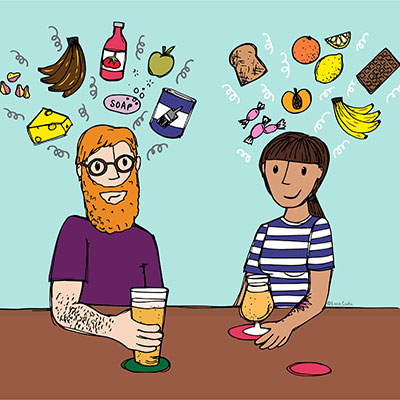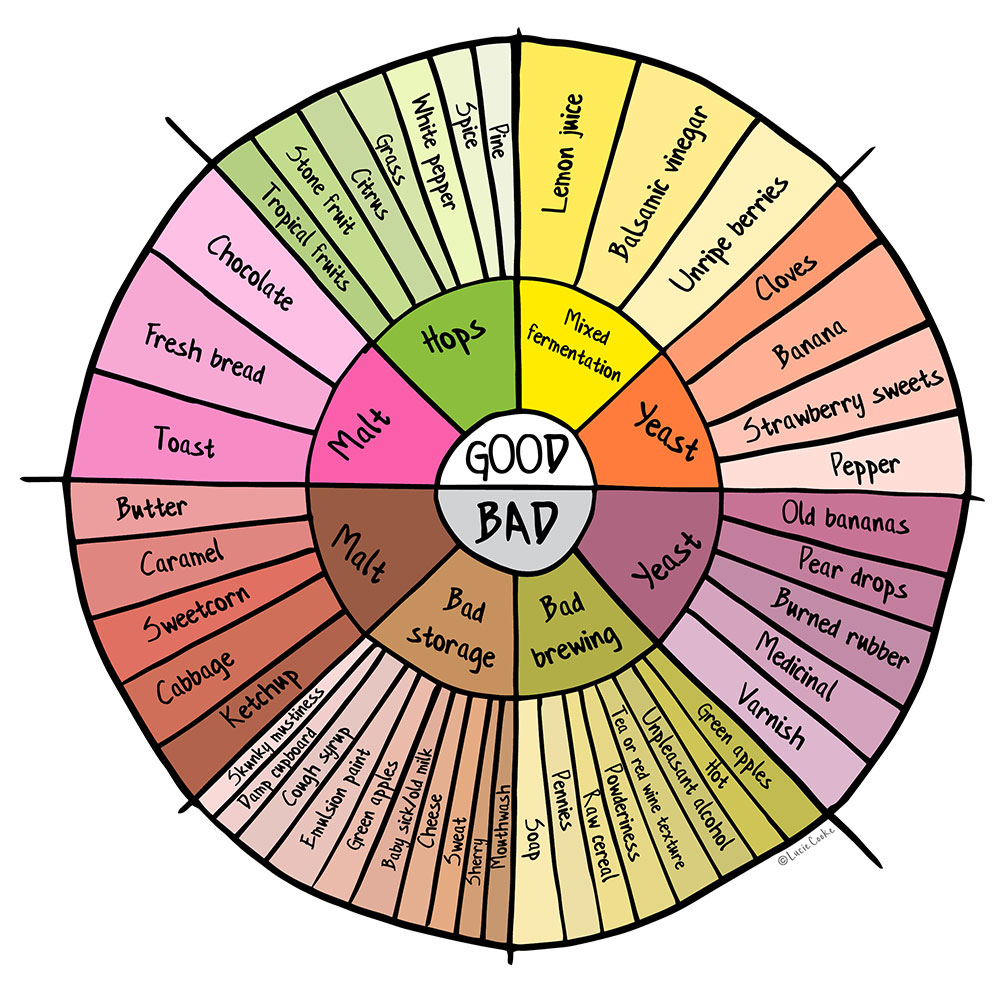Learn & Discover
Learn & Discover
Beer faults
Understanding off flavours in beer
There’s nothing like the experience of drinking beer in a pub or taproom. It’s the original setting for enjoying beer and it’s hard to beat. Sometimes, faults can develop within the beer, somewhere along the journey that takes it from brewery to glass. This guide will help you identify good and off-flavours in beer. If you do experience faulty beer Katie Mather provides advice on why it’s so important to return or exchange it.
Beer Faults
Understanding off flavours in beer
There’s nothing like he experience of drinking beer in a pub or taproom. It’s the original setting for enjoying beer and it’s hard to beat. Sometimes, faults can develop within the beer, somewhere along the journey that takes it from brewery to glass. Read more...
Emma Inch
A CAMRA member since 1997, John is volunteer with a keen interest in the technicalities of beer dispense, a GBBF bar manager, editor of Manchester’s Beer Buzz magazine and sits on CAMRA’s Technical Advisory Group.

When we drink beer, we’re hoping to taste something delicious. After that, perhaps we’re hoping to be refreshed, or comforted, or pleasantly surprised. Whatever we’re looking for in our beer, we should hopefully never come across a fault.
When you’ve been a beer fan for a while, you start to notice patterns in the drinks you love, and learn to appreciate more subtle flavour and aroma profiles within the beers you drink.
Your palate has developed so you know what tastes good and what doesn’t. You’re now enjoying diacetyl — a corn or butterscotch flavour and aroma — in Czech lagers, despite also knowing this is a fault in other styles of beer. You’re seeking out Bretty, “farmyardy” flavours in Belgian beers like Orval and in wild fermented ales — faults caused by bacterial infection that you’ve learned to love.
In a not-untrue sense, all flavours and aromas could be perceived as faults: they are simply the result of chemical and biological reactions happening within the amazing microscopic world of your beer. We have the BJCP Beer Style Guide to help us on our journey, but as you get deeper into the rabbit hole of brewing and beer, it’s normal to start questioning which faults are there to cast shade and light. Did the brewer mean for you to taste that, smell that, imagine that?

When we drink beer, we’re hoping to taste something delicious. After that, perhaps we’re hoping to be refreshed, or comforted, or pleasantly surprised. Whatever we’re looking for in our beer, we should hopefully never come across a fault.
When you’ve been a beer fan for a while, you start to notice patterns in the drinks you love, and learn to appreciate more subtle flavour and aroma profiles within the beers you drink.
Your palate has developed so you know what tastes good and what doesn’t. You’re now enjoying diacetyl — a corn or butterscotch flavour and aroma — in Czech lagers, despite also knowing this is a fault in other styles of beer. You’re seeking out Bretty, “farmyardy” flavours in Belgian beers like Orval and in wild fermented ales — faults caused by bacterial infection that you’ve learned to love.

In a not-untrue sense, all flavours and aromas could be perceived as faults: they are simply the result of chemical and biological reactions happening within the amazing microscopic world of your beer. We have the BJCP Beer Style Guide to help us on our journey, but as you get deeper into the rabbit hole of brewing and beer, it’s normal to start questioning which faults are there to cast shade and light. Did the brewer mean for you to taste that, smell that, imagine that?
So let’s rethink what we’ve learned just a little. It comes down to one question. Does it taste good?
Using a flavour wheel
A flavour wheel (click it to enlarge it) depicts the following aromas and flavours and groups them together in categories:
Good smells:
Malt: toast, fresh bread, chocolate
Hops: white pepper, spice, pine, grass, citrus, stone fruits, tropical fruits
Yeast: cloves, banana, strawberry sweets, pepper
Mixed Fermentation: lemon juice, balsamic vinegar, unripe berries, farmyard
The faults you need to know about
Bad or ‘off’ smells:
Malt: Butter, caramel, sweetcorn, cabbage, ketchup (or thousand island dressing)
Yeast: old bananas, pear drops, burned rubber, medicinal — from bleach to cough drops, varnish
Bad Storage: skunky-mustiness, damp cardboard, cough syrup, emulsion paint, green apples, baby sick or old milk, cheese, sweat, mouthwash, sherry
Bad Brewing: Green apples, hot, unpleasant alcohol, tea or red wine texture, powderiness, raw cereal, pennies, soap.
So let’s rethink what we’ve learned just a little. It comes down to one question. Does it taste good?
Using a flavour wheel
A flavour wheel depicts the following aromas and flavours and groups them together in categories:
Good smells:
Malt: toast, fresh bread, chocolate
Hops: white pepper, spice, pine, grass, citrus, stone fruits, tropical fruits
Yeast: cloves, banana, strawberry sweets, pepper
Mixed Fermentation: lemon juice, balsamic vinegar, unripe berries, farmyard
The faults you need to know about
Bad or ‘off’ smells:
Malt: Butter, caramel, sweetcorn, cabbage, ketchup (or thousand island dressing)
Yeast: old bananas, pear drops, burned rubber, medicinal — from bleach to cough drops, varnish
Bad Storage: skunky-mustiness, damp cardboard, cough syrup, emulsion paint, green apples, baby sick or old milk, cheese, sweat, mouthwash, sherry
Bad Brewing: Green apples, hot, unpleasant alcohol, tea or red wine texture, powderiness, raw cereal, pennies, soap.
Lorem ipsum dolor sit amet, consectetur adipiscing elit. Nullam lobortis vel sapien nec faucibus. Morbi consectetur pulvinar lectus, vitae sodales tellus. Sed sagittis aliquam convallis. Duis mollis libero eu massa luctus, id euismod urna fringilla. Aenean condimentum accumsan leo nec eleifend. Maecenas ullamcorper est non justo pulvinar accumsan. Nam facilisis, lacus a aliquet ornare, metus velit mattis leo, eget sodales quam ligula et nisl. Morbi venenatis tortor libero, id placerat ipsum semper a.
Section sub title goes here
Lorem ipsum dolor sit amet, consectetur adipiscing elit. Nullam lobortis vel sapien nec faucibus. Morbi consectetur pulvinar lectus, vitae sodales tellus. Sed sagittis aliquam convallis. Duis mollis libero eu massa luctus, id euismod urna fringilla. Aenean condimentum accumsan leo nec eleifend. Maecenas ullamcorper est non justo pulvinar accumsan. Nam facilisis, lacus a aliquet ornare, metus velit mattis leo, eget sodales quam ligula et nisl.





